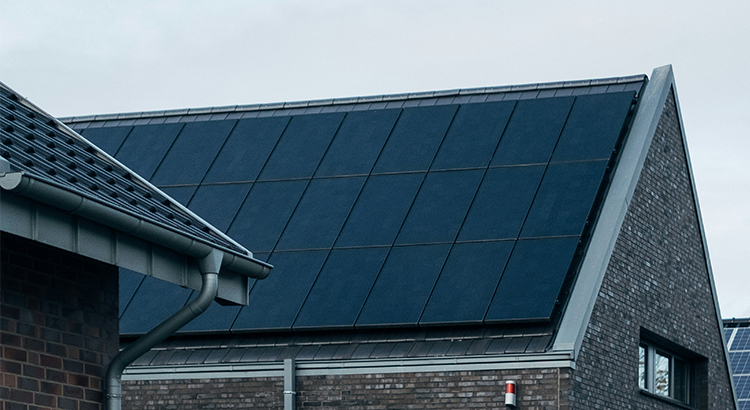Solar Panel Rebate Program 2024

The solar panel rebate program for 2024 in Perth, Western Australia offers homeowners an opportunity to harness clean, renewable energy while enjoying significant financial benefits. However, it’s crucial to exercise caution and be well-informed about the program to make the most of the available subsidies.
This article will delve into key aspects, including eligible amounts, how the solar rebate works, how to lock in your benefits, how to calculate the rebate, an expanded subsidy breakdown by system size, and a conclusion on why now is an ideal time to invest in solar power.
How Much Are You Entitled To?
The size of the installed solar energy system determines the solar rebate in Perth, which is not a fixed amount. The average residential subsidy for a solar system is $1,369 for a 3.9 kW system and $4,699 for a 13.2 kW system. The subsidies for different system sizes are shown in the table below:
| Array size | STC’s | Subsidy |
| 3.9 kW | 37 | $1,369 |
| 6.6 kW | 63 | $2,331 |
| 10.5 kW | 101 | $3,737 |
| 13.2 kW | 127 | $4,699 |
It’s important to note that these values are subject to change based on the spot price of Small Technology Certificates (STCs), which can fluctuate daily.
Learn More: How to Claim Money Off for Your Solar with STCs?
How Much Can You Save by Installing a Solar System This Year?
As the number of STCs decreases annually, opting for solar installation in this year proves to be a cost-effective decision. Explore the potential savings based on different array sizes in the table below.
| Array size | Number of STCs in 2025 | Difference in STC Count | Savings by Installing in 2024 |
| 3.9 kW | 32 | 5 | $185 – $200 |
| 6.6 kW | 54 | 9 | $333 – $360 |
| 10.5 kW | 87 | 14 | $518 – $560 |
| 13.2 kW | 109 | 18 | $666 – $720 |
How the Solar Rebate Works?
Your solar energy system’s eligibility for the rebate is determined by its capacity to offset carbon emissions over the next 7 years. Small Technology Certificates (STCs) are granted by the Australian Government Clean Energy Regulator in accordance with the size of your installation. These certificates are then traded with companies that need to offset their carbon emissions, providing you with a financial benefit.
The current stable rate for trading STCs is $37, and many retailers offer this rate to consumers, allowing for potential market fluctuations without impacting the agreed-upon rate at the time of purchase.
Lock It In
To avoid uncertainties in STC values, it’s crucial to have a clear understanding of the terms and conditions of your installation contract. Most solar installers recommend including the STC value, quantity, and total value in the contract to ensure transparency. The risk of lost STC value recovery should also be addressed in the contract to prevent unexpected costs after installation.
How to Calculate It?
Calculating your solar rebate involves a straightforward formula that takes into account the combined wattage of your solar array, the Small Technology Certificate multiplier, and the duration of the rebate program. Here’s the step-by-step process:
1. Determine Array Combined Watts
Identify the combined wattage of your solar energy system under standard test conditions. For example, if you have a 6.6 kW solar system, use this value for the calculation.
Example: Array Combined Watts=6,600
2. Apply the Formula
Use the formula Array Combined Watts × 1.382 × (Current STC Multiplier (7 years) / 1000 ) to find the maximum number of Small Technology Certificates (STCs) eligible for your system.
Example: (6600 × 1.382) × 7 / 1000 = 63
3. Calculate Subsidy Amount
Once you have the maximum number of STCs eligible (in this case, 64), multiply this by the current market value per STC. The market value is often stable, such as $37.
Example: 63 STCs × $37 = $2,331
So, for a 6.6 kW solar system, you can expect a subsidy of $2,362. Repeat this process for different system sizes to determine the specific subsidy amounts for your solar energy project. This calculation ensures transparency and allows you to understand the financial benefits of the solar rebate based on your system’s capacity.
Subsidy by System Size Expanded
For a quick reference, the following table provides an expanded subsidy breakdown for various system sizes, assuming a $37 STC value:
| Array size | STC’s | Subsidy |
| 3.9 kW | 37 | $1,369 |
| 6.6 kW | 63 | $2,331 |
| 10.5 kW | 101 | $3,737 |
| 13.2 kW | 127 | $4,699 |
| 19.8 kW | 191 | $7,067 |
| 26.4 kW | 255 | $9,435 |
| 39.6 kW | 383 | $14,171 |
Please note that these values are examples and are subject to potential market fluctuations.
Conclusion
Investing in solar power through the Solar Panel Rebate Program 2024 in the Perth region presents a golden opportunity for homeowners to reduce their carbon footprint and secure substantial upfront savings.
While the subsidy amounts may decrease over the years, the current stability in STC values and the long-term benefits of clean energy make now an ideal time to transition to solar power. Ensure a hassle-free experience by choosing a reliable solar provider and locking in your subsidy through a transparent and comprehensive installation agreement.
Tags: solar rebate
